Maximalist kitchen ideas – 5 ways to create a 'more-is-more' space that still feels chic and liveable
Create a joyful kitchen by embracing a maximal approach to decor

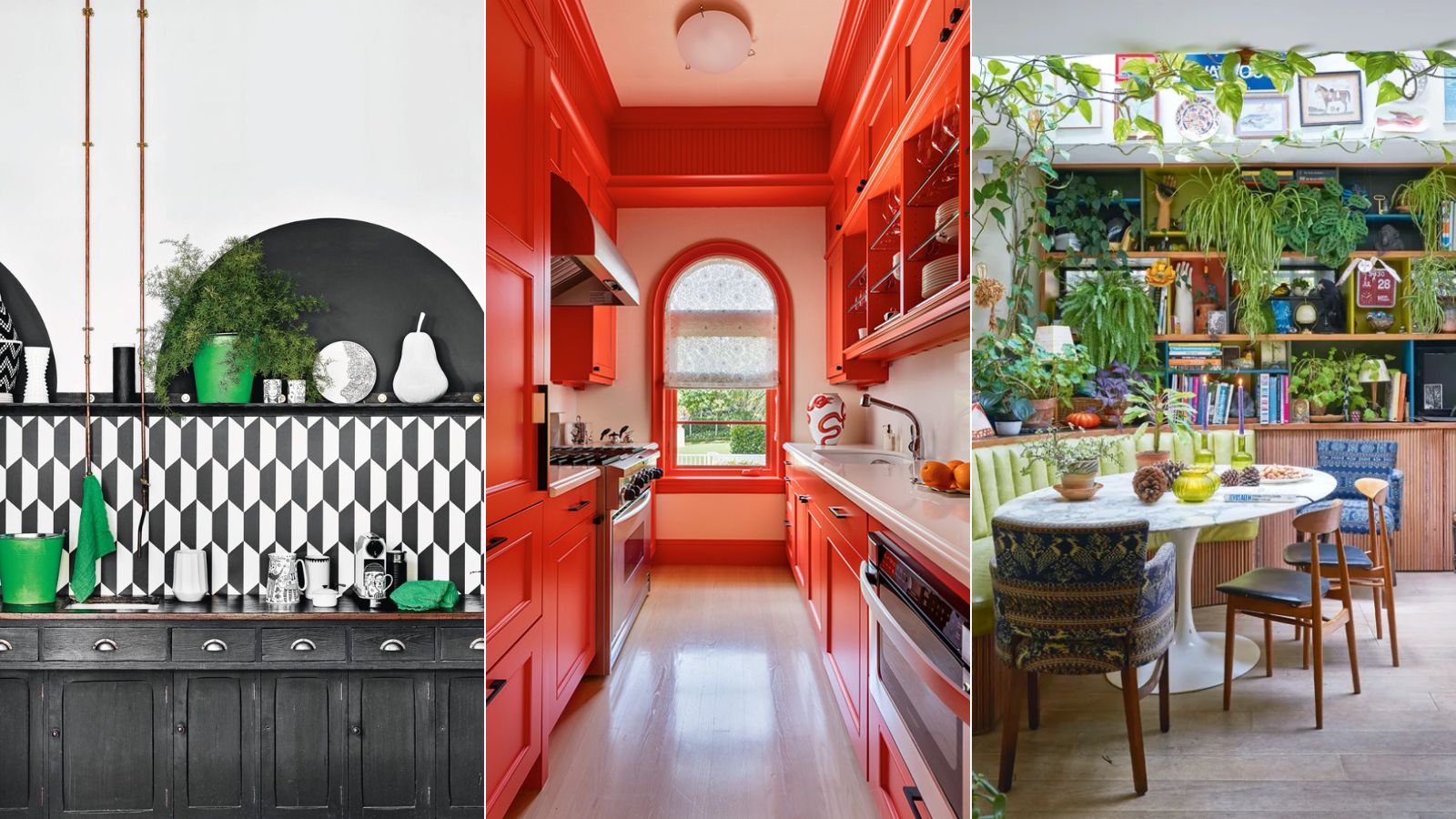
Maximalism has been a major design trend this year. As homeowners seek to create spaces that feel deeply personalized through bold colors and playful patterns, we're seeing a shift away from reserved minimalism to this more expressive way of decorating.
But how can you bring this look into the kitchen? The kitchen serves as a highly practical and social space in the home so it's important that your maximalist decor doesn't compromise its functionality.
According to interior designers, there are lots of ways you can create a maximalist feel in the kitchen while ensuring the room maintains timeless appeal.
5 ways to create a maximalist kitchen
'Kitchens are a very personal space, also serving as a great place to experiment with maximalist design; maximalist design can really inspire creativity in the kitchen,' says Eleanor Trepte and Nina Grauer, interior designers at Dekay & Tate.
Below, we've rounded up five different decorating with maximalism ideas to consider for the kitchen. From decorating with bold colors to creating an eclectic look through shelving, you can embrace this look as much or as little as you like.
'Make things fun by adding color and pattern unexpectedly, and items that bring nostalgia like retro small appliances and vintage food or brand paintings,' says Amber Guyton, interior designer at Blessed Little Bungalow.
1. Choose bold backsplash tiles
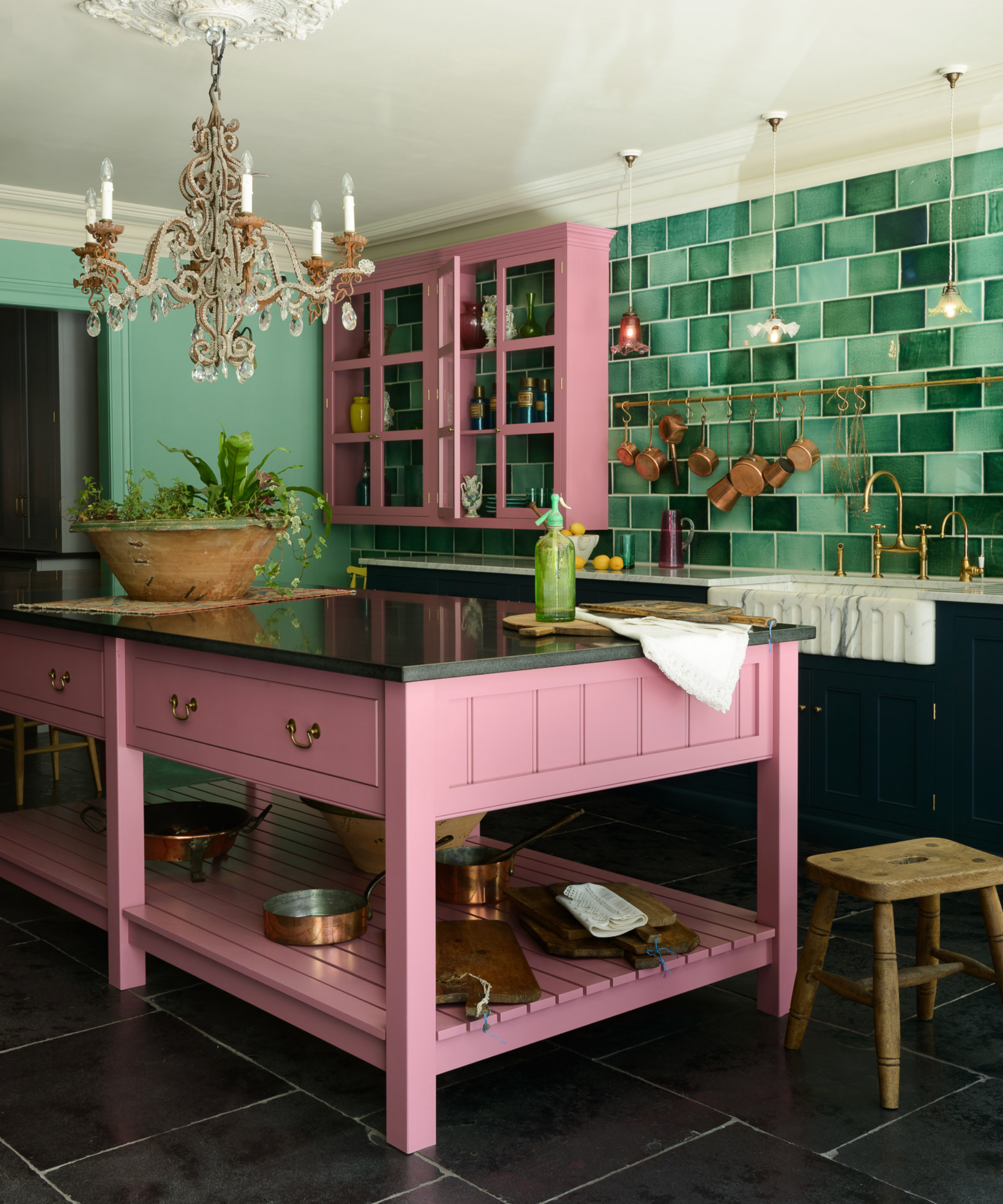
Decorating with kitchen tiles is a great way to experiment with adding patterns and colors to the room. While opting for bold colors across kitchen cabinets can feel daunting, you can be more daring with kitchen backsplash tiles in comparison since they don't dominate the space so much.
Design expertise in your inbox – from inspiring decorating ideas and beautiful celebrity homes to practical gardening advice and shopping round-ups.
'Choose a bold and patterned backsplash, like Moroccan tiles, geometric patterns, or colorful mosaic tiles,' suggests interior designer Soledad Alzaga. As Soledad suggests, there are lots of tiles to choose from that will all help create a maximalist look. Just make sure that they tie in with your wider color scheme for a cohesive finish.
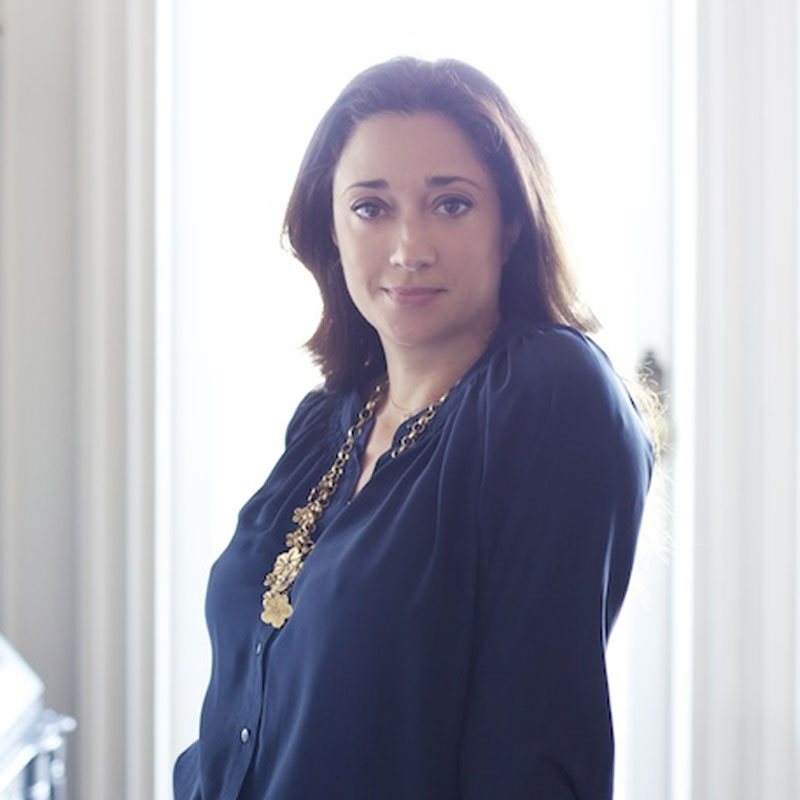
San Francisco-based Interior designer Soledad Alzaga has worked on designs projects in San Francisco, Sonoma, Atherton, New York, Martha's Vineyard, Los Angeles, Mexico and Argentina.
2. Opt for open shelving
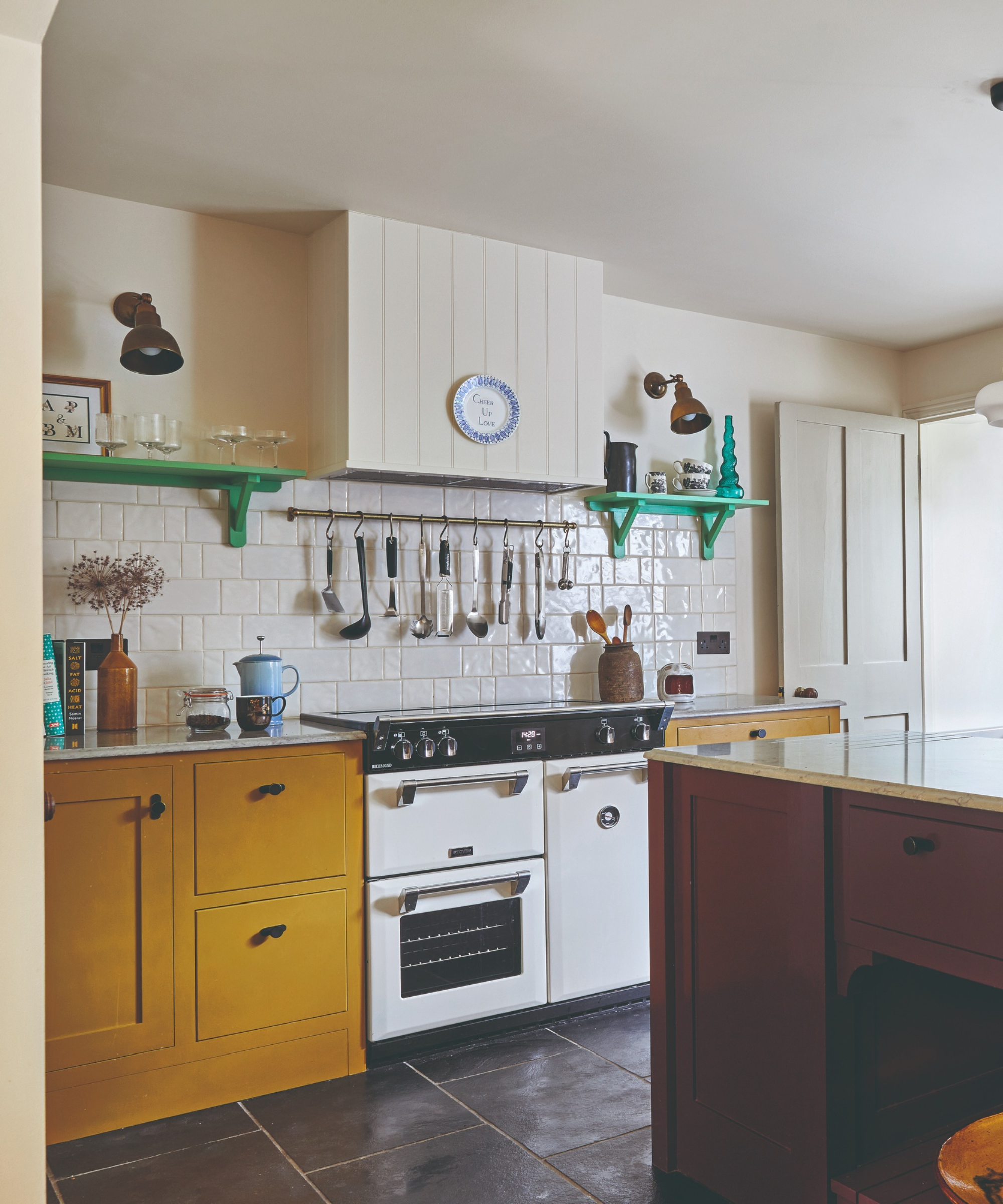
Maximalist decor is all about not being so particular around perfectly arranged items, and rather embracing more of an eclectic approach by showcasing meaningful and practical items. In the kitchen, a good way to adopt this approach is by opting for open kitchen shelving. This will allow you to have items on show which adds layers of interest to the whole space. 'Display decorative dishes, glassware, and kitchen accessories on open shelves,' suggests Soledad.
3. Mix and match styles

Another way to create a maximalist-style kitchen is to embrace a mismatched approach when choosing furniture and decor items. This will ensure your kitchen doesn't look overly uniform but rather feels interesting with modern elements contrasted with vintage furniture, for example. 'Mix and match furniture styles, materials, and colors,' suggests Soledad. 'Incorporate vintage pieces, antique furniture, or unique finds.'
The best way to go about this is to consider adding items over time through decorating with vintage. The beauty of maximalism is that you don't need to be so strict with following rules, but rather consider layering different items which will subsequently achieve this more-is-more look.
4. Embrace bold colors
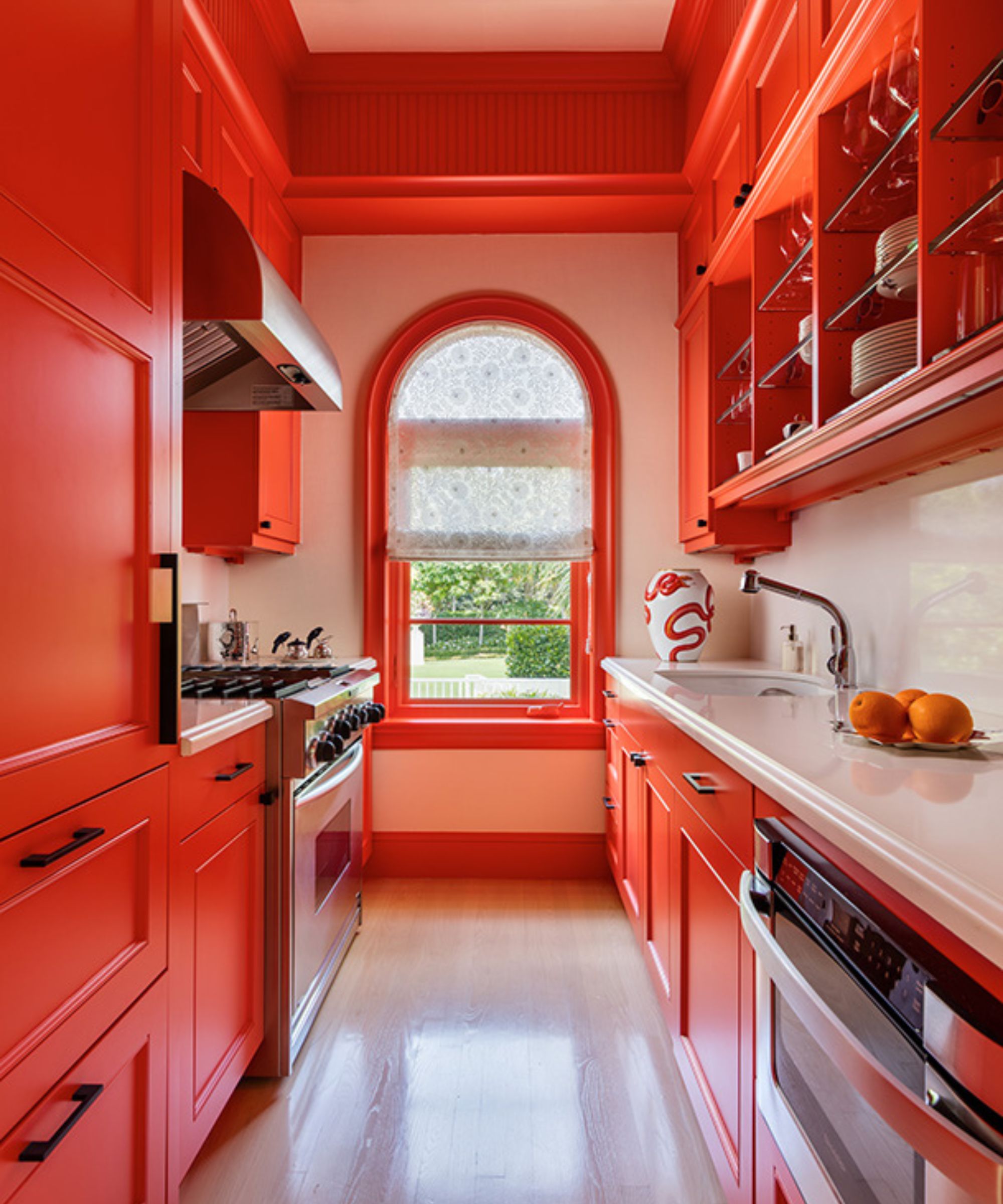
Choosing the best kitchen color will likely be one of the most important decisions you make. While minimalism favors pared-back neutrals, maximalism is far more daring when it comes to paint ideas. From deep and moody hues that have dominated kitchen trends this year, to uplifting and bright shades, no color is off-limits for your maximalist kitchen.
'Bold color is one way to grow a space that may physically have a small footprint,' says interior designer Matthew Boland of MMB Studio, who designed the kitchen pictured above. He says of this vibrant, maximalist scheme: 'The color is unexpected and generously applied. The smallest spaces can be the most memorable if you keep the focus strong. In this space, the focus was the paint color.'
5. Decorate with artwork
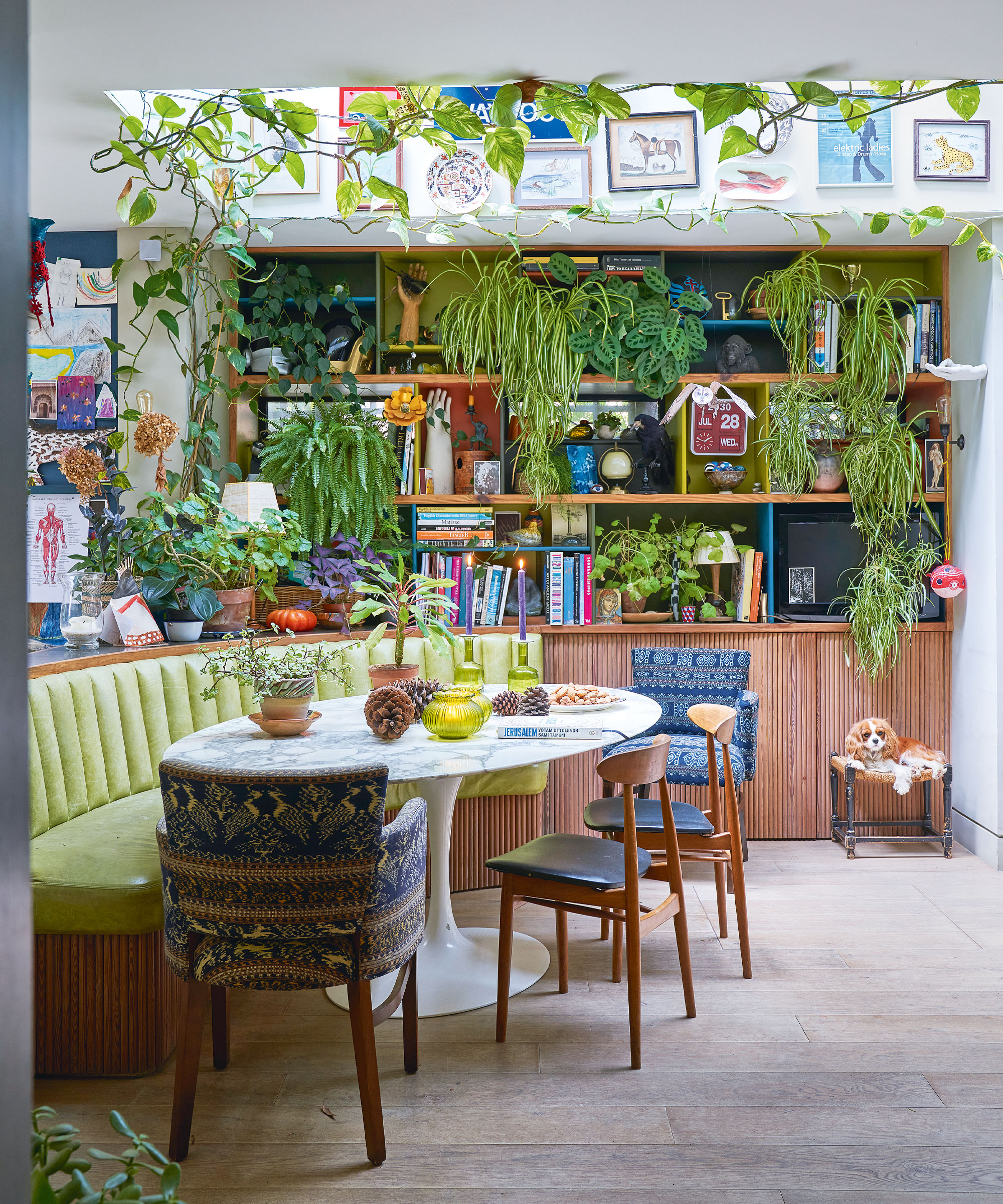
Decorating with art is an easy way to add some drama to your kitchen. While artwork is typically hung in rooms such as living rooms, there's no reason you can't add some creative flair to the kitchen with colorful artwork. This can be a great way of adding interest if you want to keep cabinetry and walls fairly understated, and can easily be swapped over time.
There are so many ways you can create a maximalist-style kitchen, whether that's through bold color choices or mixing furniture styles. It's important to keep in mind that there are no specific rules to follow to create this eclectic look, but rather consider your decor as a space to mix and match items to create a unique and uplifting space.
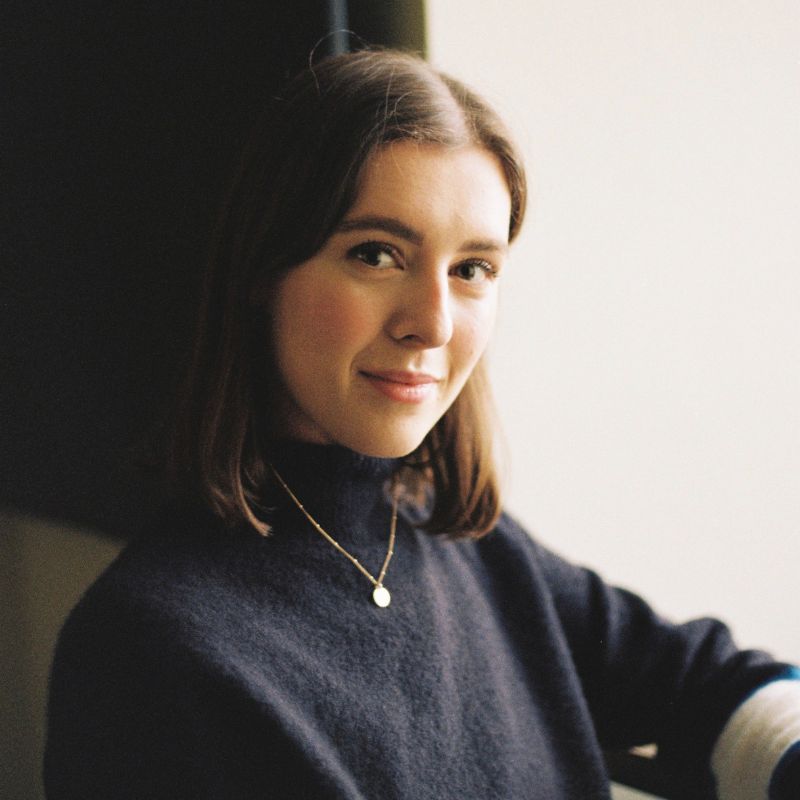
Emily is a freelance interior design writer based in Scotland. Prior to going freelance in the spring of 2025, Emily was Homes & Gardens’ Paint & Color Editor, covering all things color across interiors and home decor for the Homes & Gardens website. Having gained specific expertise in this area, Emily is well-versed in writing about the latest color trends and is passionate about helping homeowners understand the importance of color psychology in home design. Her own interior design style reflects the simplicity of mid-century design and she loves sourcing vintage furniture finds for her tenement flat.